A whole packer brisket consists of two muscles—the lean flat and the marbled point—separated by a thick layer of fat. Since they cook at different rates, separating them can help ensure even cooking and better results.
In this guide, I’ll show you exactly how to separate the flat from the point with a few simple steps so you can get the best texture and flavor from your brisket.
What you’ll need
- Slicing knife – A large, slicing knife is ideal for separating the two muscles. It will be long enough to slice through the entire brisket and strong enough to cut through the thick deckle fat that runs between the muscles.
- Boning knife – a smaller boning knife is ideal for trimming the excess fat & silver skin from the brisket after you have separated the muscles.
- Butcher block – a sturdy butcher block is ideal for trimming brisket.
- Bowl or pan – it’s a good idea to keep a bowl or aluminum pan nearby to collect the trimmed fat (which you should save to make beef tallow with!)
- Nitrile gloves – while these are optional, I find it helpful to wear a pair of nitrile gloves while trimming meat. It will help keep your hands clean as you work with the meat.
Choosing your brisket
I typically don’t recommend separating the flat from the point on a standard select or choice-grade brisket.
This process becomes more important when you start working with higher-quality (and more expensive) cuts of meat, like USDA prime grade and Wagyu briskets.
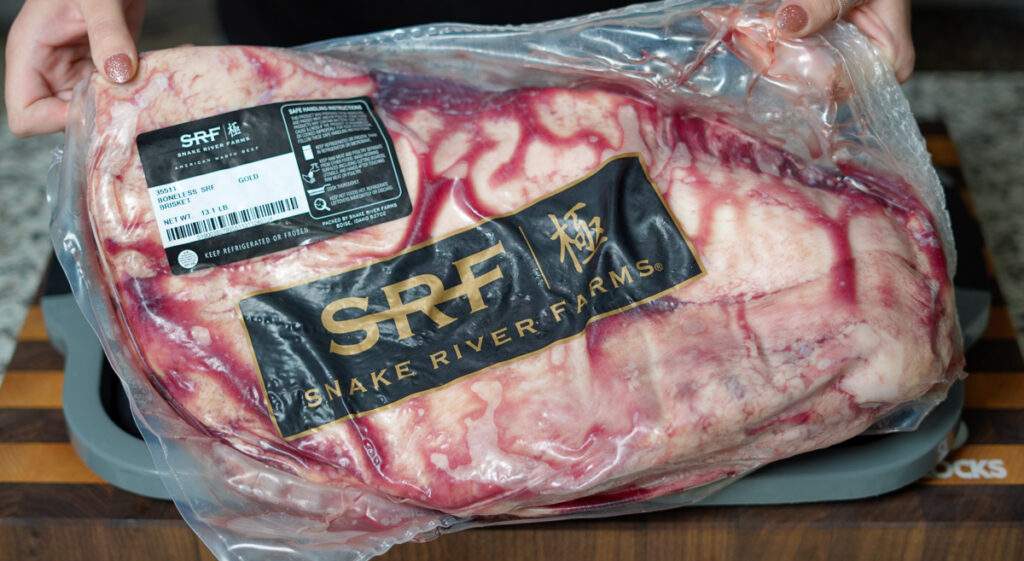
American Wagyu briskets are popular for competition barbecue due to their exceptional marbling and rich flavor.
Visit Site
Today, I’m trimming a gold-grade American Wagyu brisket from Snake River Farms. Snake River Farms is a favorite choice for competition cooks across the nation and is known for providing high-quality briskets.
With the money you spend on a high-quality brisket, you want to ensure that every portion is cooked perfectly. This is where separating the muscles becomes essential.
How to separate the brisket flat and the point
1. Initial brisket trim & deckle removal
I like to start by laying the whole packer brisket down onto my cutting board and trimming the edges. I like to remove any discolored meat and round off any edges that are significantly thinner than the rest of the brisket.
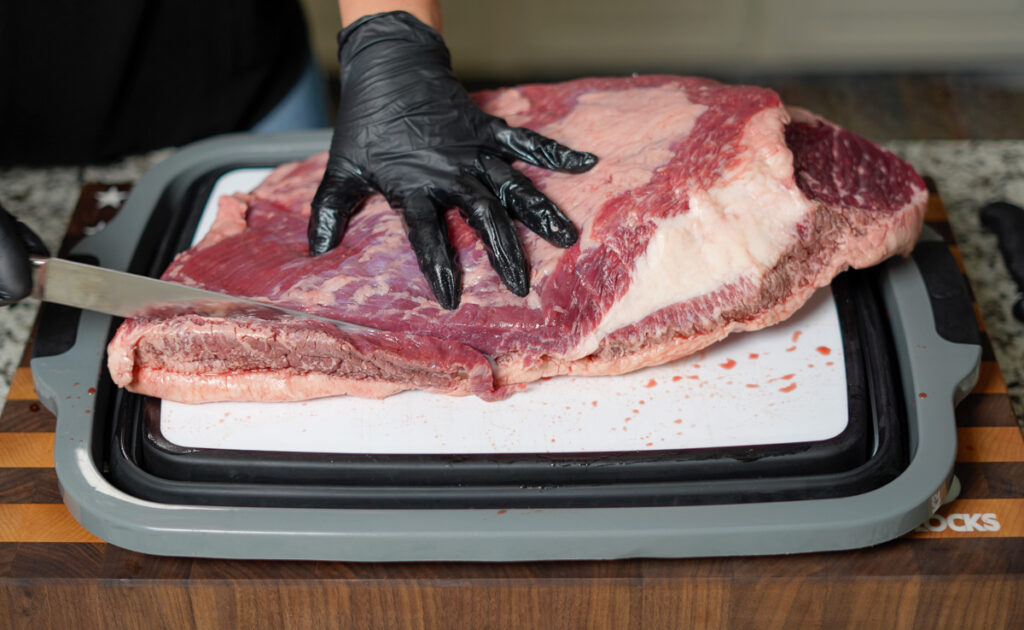
I also use my knife to start trimming some of the deckle fat off the top to give myself a good view on precisely where the two muscles are divided.
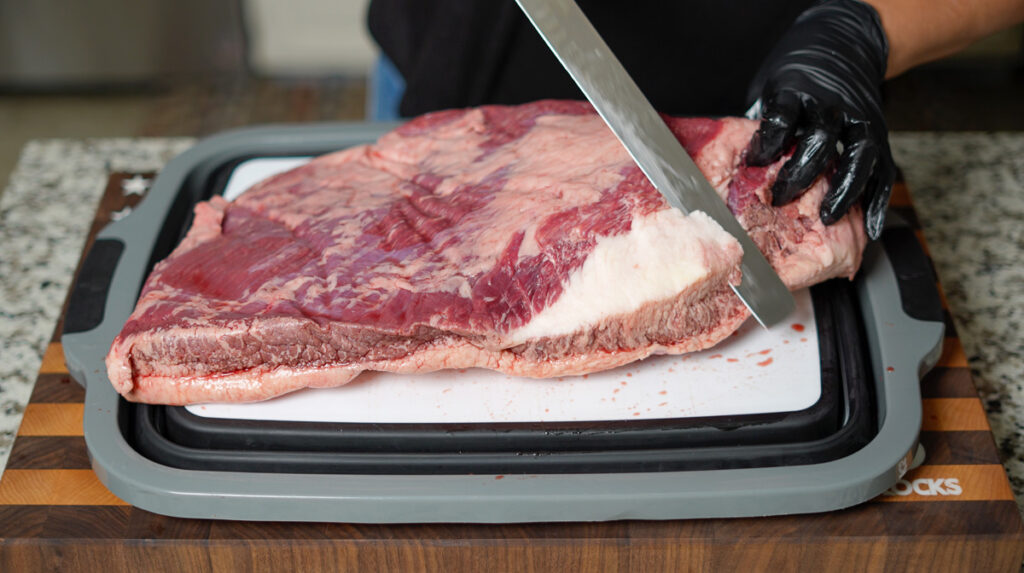
2. Separating the muscles
This step can be a little daunting if you’ve never separated a brisket before. You may feel like you’re going in blind if you’re not familiar with the anatomy of a brisket, but keep in mind that there is a significant layer of fat separating the muscles.
Lay your brisket on the butcher block with the fat cap facing down.
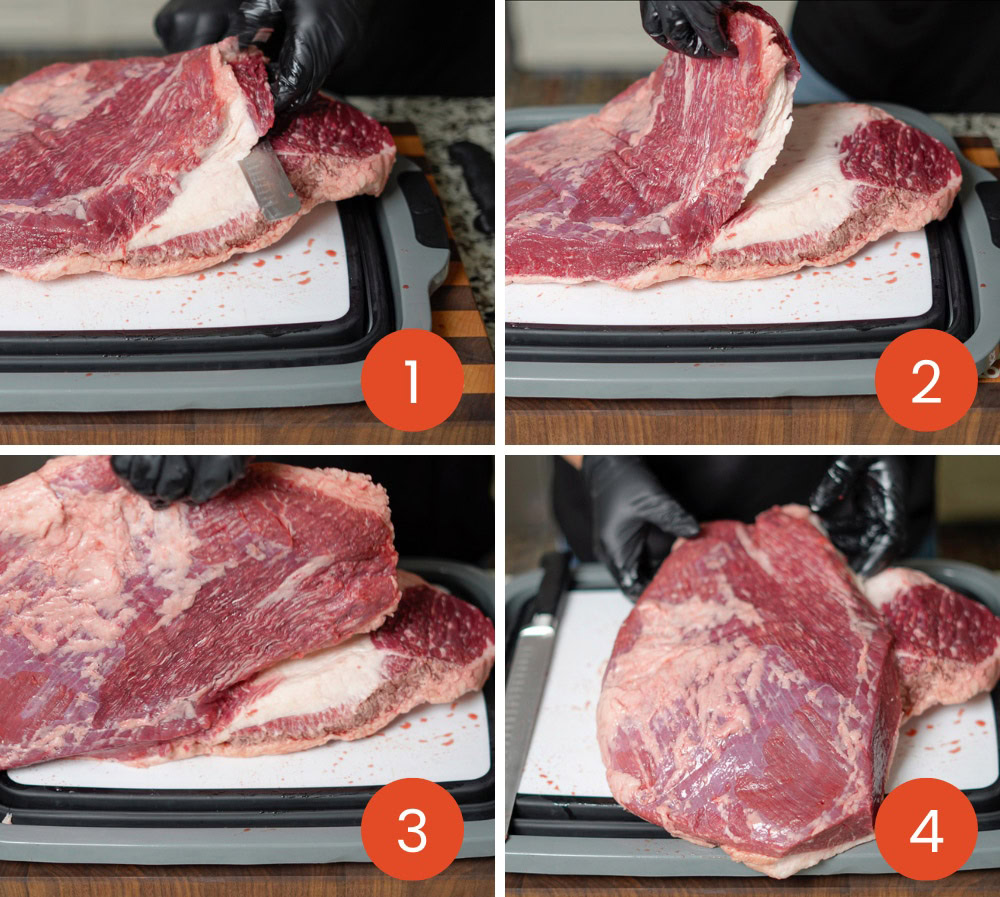
- Take your slicing knife and start at the top portion of the deckle. You will see the point muscle lying on top and the flat muscle running below.
- You want to run your slicing knife in smooth, long cuts right through the center of the deckle fat at a 45° downward angle. As you slice, you will see the separation in the two muscles and you can continue to slice downward until they are fully separated.
- Don’t be afraid to take your time here and go slow. You want to use long, slow slices to separate the muscles and avoid damaging either muscle.
- Once you’ve sliced the two muscles apart, you can set the point aside and start working on trimming the flat.
3. Trimming the flat
You will trim the fat in the same way you would trim a whole brisket. You will cut off any excess fat and silver skin on the top side, then you can round off the edges so that the entire flat is as uniformly thick as possible.
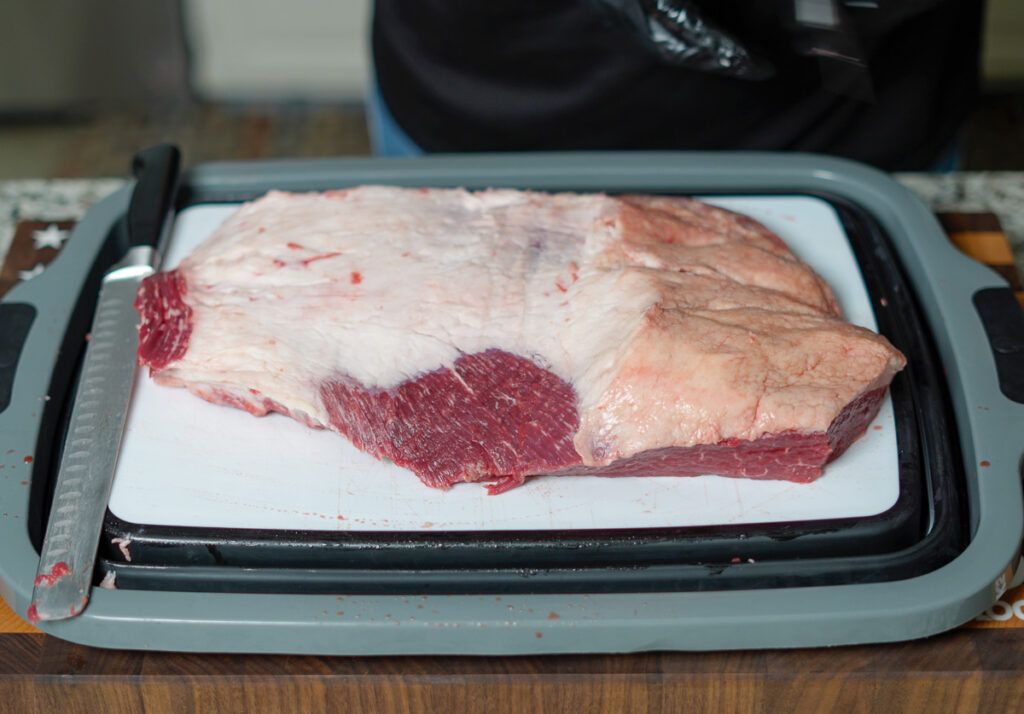
On the bottom side, you can trim the fat cap down to about ¼” thick. This will allow the fat to protect the meat during the cooking process without leaving you with too much fat to deal with in the final product.
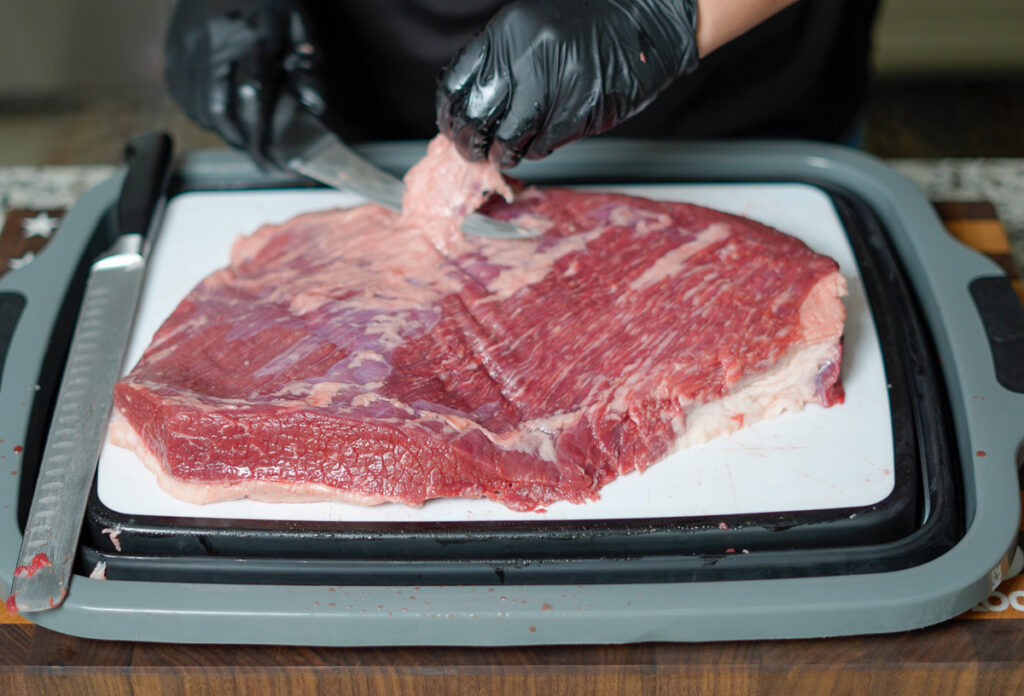
4. Trimming the point
The fat cap on the point can be trimmed off completely. There is enough marbling (intramuscular fat) in this portion of the brisket that it doesn’t need the fat cap to produce juicy meat.
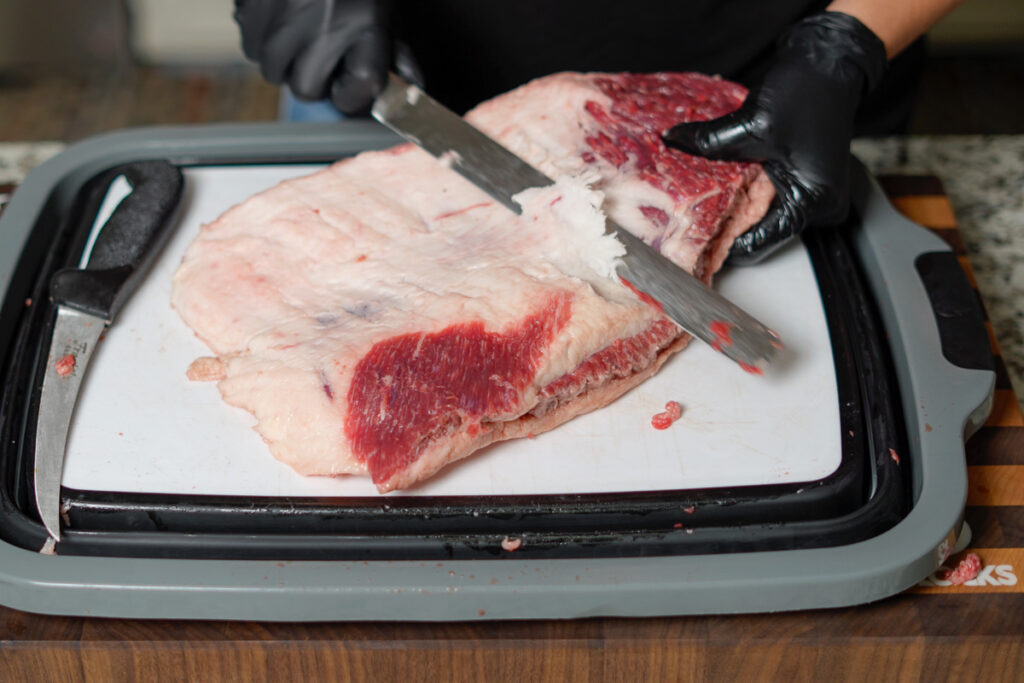
I like to round off the edges and get the point as uniformly thick as possible for even cooking. Scraps can be used for burgers, sausage, or stir fry.

Now that you’ve separated the brisket flat and point, you’re ready to cook each cut to perfection. Whether you’re smoking the flat for classic slices or turning the point into brisket burnt ends, this method ensures the best results. If you have any questions or tips of your own, drop a comment below—I’d love to hear from you!
Did you miss our previous article...
https://manstuffnews.com/backyard-grilling/pit-boss-vs-traeger-which-pellet-grill-brand-is-best-in-2025
 Backyard GrillingWeekend WarriorsAdvice from DadBeard GroomingTV Shows for Guys4x4 Off-Road CarsMens FashionSports NewsAncient Archeology World NewsPrivacy PolicyTerms And Conditions
Backyard GrillingWeekend WarriorsAdvice from DadBeard GroomingTV Shows for Guys4x4 Off-Road CarsMens FashionSports NewsAncient Archeology World NewsPrivacy PolicyTerms And Conditions
